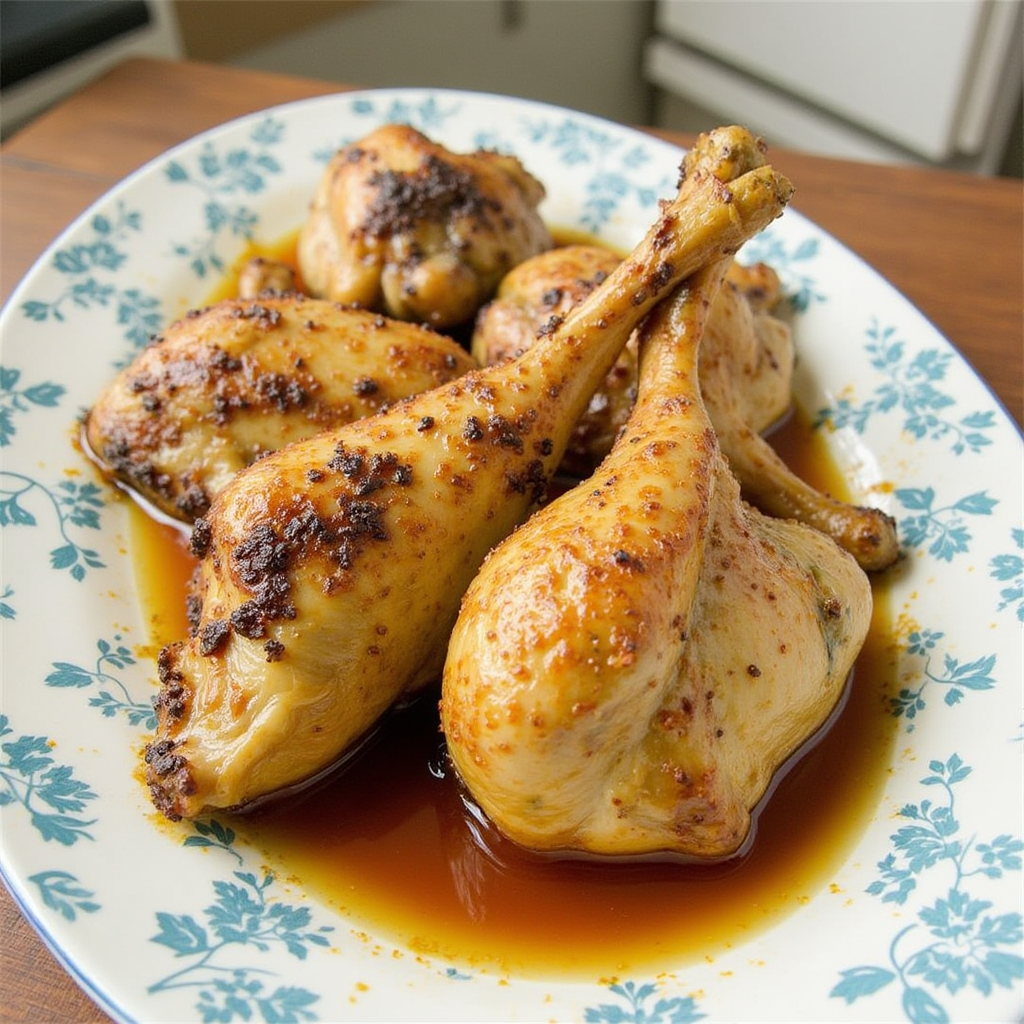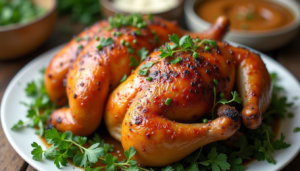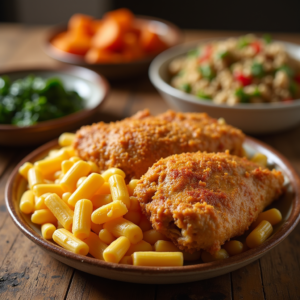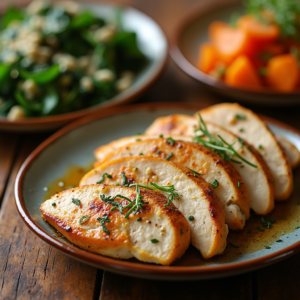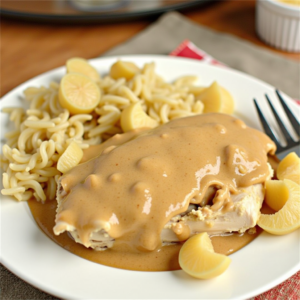Ultimate Brine Chicken Recipe for Incredibly Tender, Moist Poultry
Brine Chicken Recipe : The Secret to Juicy, Flavorful Chicken
Have you ever taken a bite of chicken, only to find it dry and lacking in flavor? It’s a common problem, but one with a surprisingly simple solution: brining. If you’ve never brined chicken before, you might be missing out on the best-kept secret to juicy, tender, and incredibly flavorful poultry.
Brining isn’t just for professional chefs; it’s a straightforward process that anyone can master. By immersing your chicken in a saltwater solution, you help it retain moisture, ensuring every bite is succulent and delicious. Whether you’re roasting, grilling, or frying, this method elevates your chicken game to a whole new level.
In this guide, you’ll learn everything you need to know about brining chicken — from the science behind it to the best techniques and tips for success. By the end, you’ll be well on your way to cooking chicken that’s not just good, but truly restaurant-quality.
Table of Contents
What is Brining and Why Does It Work?
The Science Behind Brining
At its core, brining is a process that uses osmosis to enhance the moisture content of meat. When chicken is soaked in a saltwater solution, the salt alters the protein structure, allowing the meat to retain more water. This means that even when the chicken is cooked, it stays moist and flavorful rather than drying out.
The result? Juicier, more tender meat with better texture and taste. But that’s not all — brining also helps to infuse the chicken with additional flavors, especially if you add herbs, spices, or aromatics to the mix.
Benefits of Brining Chicken:
- Locks in moisture, preventing dry, tough meat.
- Enhances flavor, allowing the seasoning to penetrate deep.
- Improves texture, making the meat more tender and enjoyable.
The Best Simple Brine Chicken Recipe
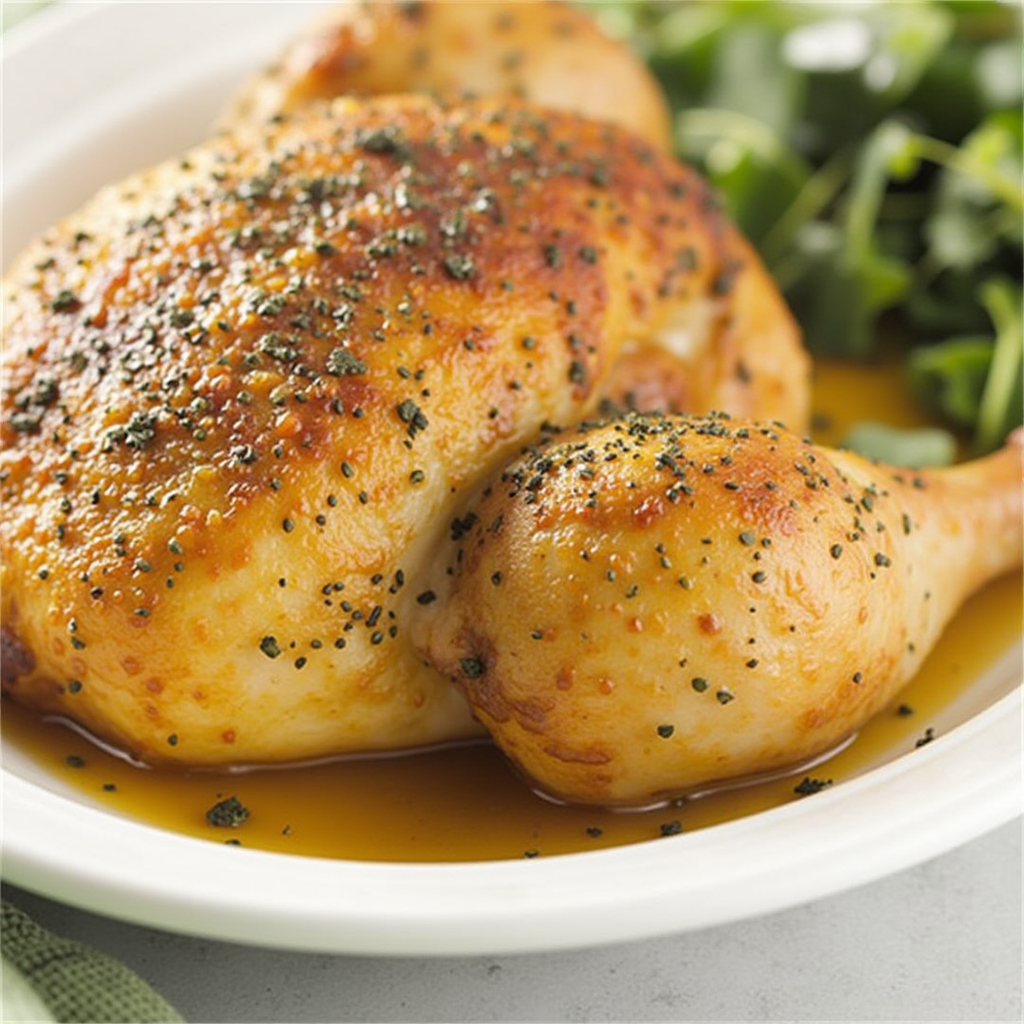
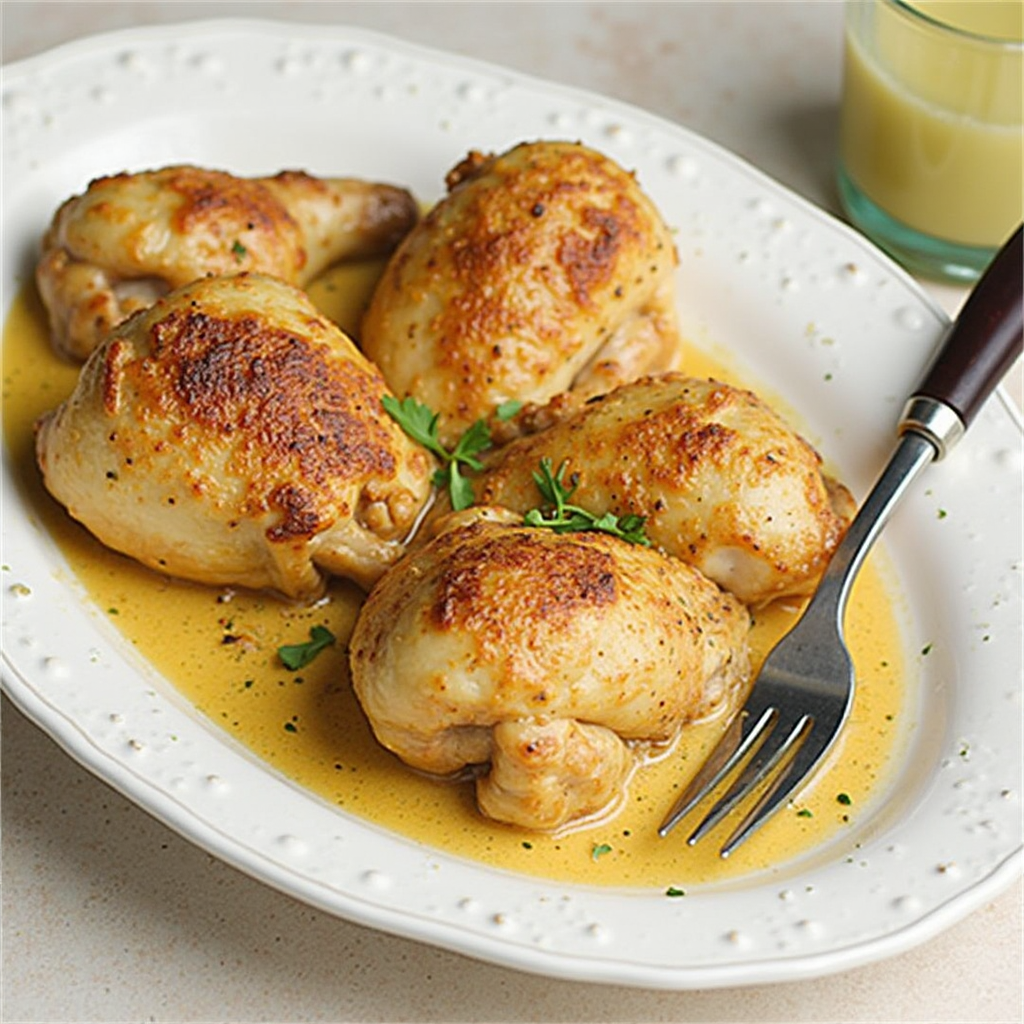
Essential Ingredients for a Classic Chicken Brine
Brining doesn’t require a long list of ingredients. In fact, a basic brine only needs salt and water. However, adding extra ingredients can enhance the flavor even further.
| Ingredient | Purpose |
|---|---|
| Water | Base for the brine solution |
| Salt (Kosher or Sea) | Retains moisture, enhances flavor |
| Sugar (Optional) | Balances saltiness, adds mild sweetness |
| Herbs & Spices | Infuses aromatic flavors |
| Garlic | Adds depth to the taste |
| Lemon Juice | Enhances tenderness and flavor |
Step-by-Step Guide to Brining Chicken
- Prepare the Brine: In a large container, dissolve salt (and sugar, if using) in water. Stir until completely dissolved.
- Add Aromatics: Toss in herbs, garlic, lemon juice, or any additional flavor boosters.
- Submerge the Chicken: Place the chicken in the brine, ensuring it is fully covered.
- Refrigerate: Allow the chicken to soak for the recommended time (see table below).
- Remove & Rinse: Take the chicken out of the brine, rinse lightly, and pat dry before cooking.
- Cook as Desired: Roast, grill, or fry to perfection!
How Long Should You Brine Chicken?
Brining times vary depending on the cut and size of the chicken. Over-brining can lead to overly salty or mushy meat, so timing is key.
| Chicken Cut | Recommended Brining Time |
|---|---|
| Whole Chicken | 12-24 hours |
| Chicken Breasts | 30 minutes – 2 hours |
| Chicken Thighs/Drumsticks | 1-4 hours |
| Chicken Wings | 30 minutes – 2 hours |
Tip: For a quicker method, increase the salt concentration slightly, but never exceed the recommended times.
Best Cooking Methods for Brined Chicken
Roasting, Grilling, and Frying Brined Chicken
Roasting
- Best for whole chickens or large cuts.
- Roast at 375°F (190°C) until internal temp reaches 165°F (75°C).
- Ensures a golden, crispy skin with a juicy interior.
Grilling
- Perfect for smoky, charred flavors.
- Use indirect heat to cook slowly and prevent burning.
- Brush with oil to enhance browning.
Frying
- Ideal for crispy skin and juicy meat.
- Pat chicken completely dry before frying to avoid splattering.
- Maintain oil temperature at 350°F (175°C) for best results.
Common Mistakes to Avoid When Brining Chicken
Pitfalls and How to Fix Them
- Using too much salt — Leads to overly salty meat; always measure carefully.
- Brining for too long — Can make the chicken mushy; follow time guidelines.
- Not drying the chicken before cooking — Prevents proper browning and crispiness.
- Using warm water — Encourages bacterial growth; always refrigerate while brining.
Frequently Asked Questions (FAQ)
Your Brining Questions Answered
Can I brine chicken overnight?
Yes! Overnight brining works well for whole chickens, but for smaller cuts, shorter brining times are recommended.
Do I need to rinse the chicken after brining?
Yes, to remove excess surface salt. However, be sure to pat it completely dry before cooking.
Can I use table salt instead of kosher salt?
Yes, but use less, as table salt is denser than kosher salt. A good rule of thumb is 1 cup kosher salt = 3/4 cup table salt.
Can I freeze brined chicken?
Yes! Just make sure to pat it dry before freezing to avoid excess moisture buildup.
Conclusion: Elevate Your Chicken Game with Brining
If you’ve never brined chicken before, now is the time to try it. This simple yet transformative technique guarantees juicier, more flavorful poultry every time. Whether you’re roasting a whole bird, grilling wings, or frying up crispy tenders, brining makes all the difference.
So, why settle for dry, bland chicken when you can enjoy restaurant-quality poultry right at home? Try this simple brine chicken recipe today and taste the difference for yourself!
What are you waiting for? Get started and level up your chicken dishes today!

